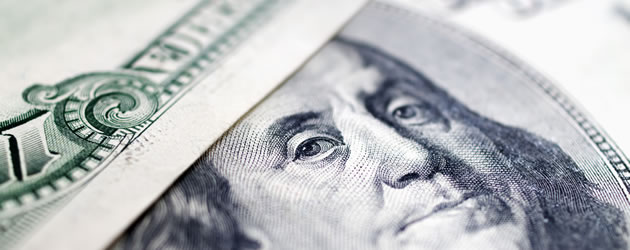
Yesterday the Pound to US Dollar exchange rate declined by around -0.4 cents despite a combination of bullish domestic UK releases. After touching a daily high of 1.5243 GBP/USD slid back down to 1.5135, indicating that a strong US Non-farm Payroll report could push GBP/USD down towards significant psychological support at 1.5000.
Sterling begun the day on the front foot as the UK Manufacturing Industry posted its strongest score for over two years. The impressive 54.6 print smashed analysts’ expectations of a more subdued 52.8. The positive result was especially encouraging for British economic prospects because it detailed that all sections of the Manufacturing Industry are currently expanding. Jobs Growth and New Export Orders both reached near-2-year highs. If the UK Manufacturing Sector can continue to grow like this then George Osborne and David Cameron’s prophesized export-led recovery could actually become a reality.
The Pound’s fortunes improved again at midday when the Bank of England announced that it was not planning to embark on any fresh quantitative easing measures during August. The asset purchasing target was held at £375 billion and the record-low benchmark interest rate was maintained at 0.50%. Although the decision was largely expected, GBP/USD did jump on the release as Sterling traders breathed a sigh of relief.
GBP/USD ran into some trouble in the afternoon though as the latest US Initial Jobless Claims figure took markets by surprise, coming in at a 6-year low of 326,000. Following Wednesday’s stronger-than-expected 200,000 ADP Employment Change report, the sturdy Jobless Claims figure bodes well for this afternoon’s highly anticipated US Non-farm Payrolls report. The ‘Greenback’ was also boosted by a 23-month high US ISM Manufacturing print of 55.4, beating expectations of 52.0.
Under the current market conditions the US Dollar is a slave to the Federal Reserve’s quantitative easing programme; rising when Fed taper bets increase; falling when QE3 looks set to continue. The pace of the Fed’s easing scheme is dependent on the performance of the US labour market and the US Consumer Price Index. With inflationary pressures gradually rising towards the Fed’s 2.0% target, markets have taken to placing huge amounts of importance on each labour market reading. Therefore, this afternoon’s NFP report could have profound implications for the US Dollar. If the figure comes in significantly above the anticipated 185,000 then the ‘Greenback’ can be expected to soar, but if the result undershoots expectations then the US Dollar could give back some ground to the Pound.
On the downside, support for GBP/USD exists at 1.5000 and then 1.4813. On the upside, resistance for GBP/USD exists at 1.5250 and then at 1.5434.
Sterling grew by around 0.4 cents to 1.1450 against the Euro yesterday as, although the European Central Bank refrained from any further monetary loosening, Chairman Mario Draghi’s policy statement featured concerns surrounding the Unemployment crisis in the currency zone and also surrounding weak credit growth. The neutral-to-negative tone raised fears that future easing could be introduced when the Fed cools its risk-boosting QE3 scheme.

Comments are closed.